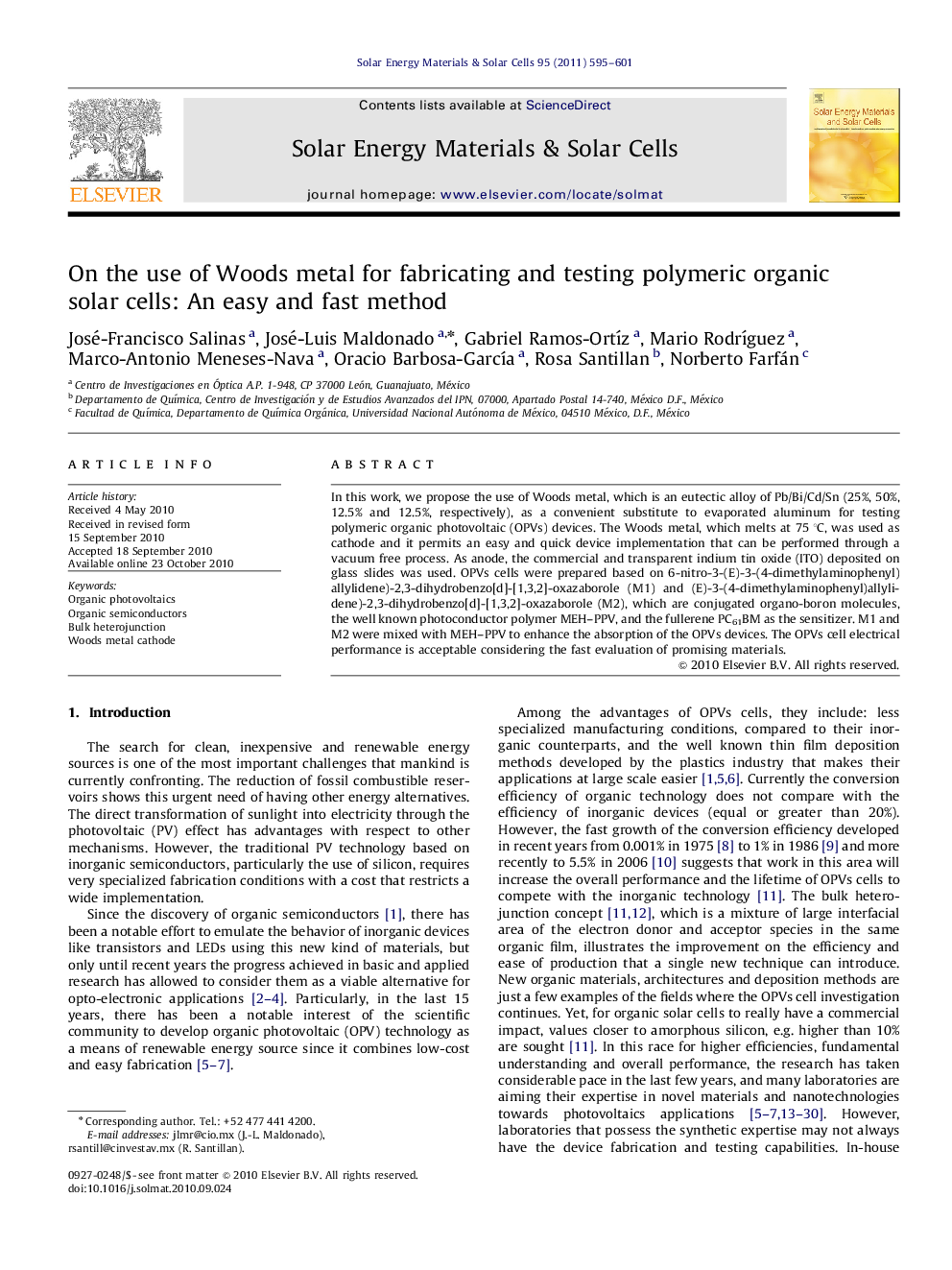| Article ID | Journal | Published Year | Pages | File Type |
|---|---|---|---|---|
| 79226 | Solar Energy Materials and Solar Cells | 2011 | 7 Pages |
In this work, we propose the use of Woods metal, which is an eutectic alloy of Pb/Bi/Cd/Sn (25%, 50%, 12.5% and 12.5%, respectively), as a convenient substitute to evaporated aluminum for testing polymeric organic photovoltaic (OPVs) devices. The Woods metal, which melts at 75 °C, was used as cathode and it permits an easy and quick device implementation that can be performed through a vacuum free process. As anode, the commercial and transparent indium tin oxide (ITO) deposited on glass slides was used. OPVs cells were prepared based on 6-nitro-3-(E)-3-(4-dimethylaminophenyl)allylidene)-2,3-dihydrobenzo[d]-[1,3,2]-oxazaborole (M1) and (E)-3-(4-dimethylaminophenyl)allylidene)-2,3-dihydrobenzo[d]-[1,3,2]-oxazaborole (M2), which are conjugated organo-boron molecules, the well known photoconductor polymer MEH–PPV, and the fullerene PC61BM as the sensitizer. M1 and M2 were mixed with MEH–PPV to enhance the absorption of the OPVs devices. The OPVs cell electrical performance is acceptable considering the fast evaluation of promising materials.
Graphical AbstractManufacturing process and exhibition of the photovoltaic performance of an organic solar cell by using spin-coating to set the organic layer and Wood's metal as back contact.Figure optionsDownload full-size imageDownload as PowerPoint slide
